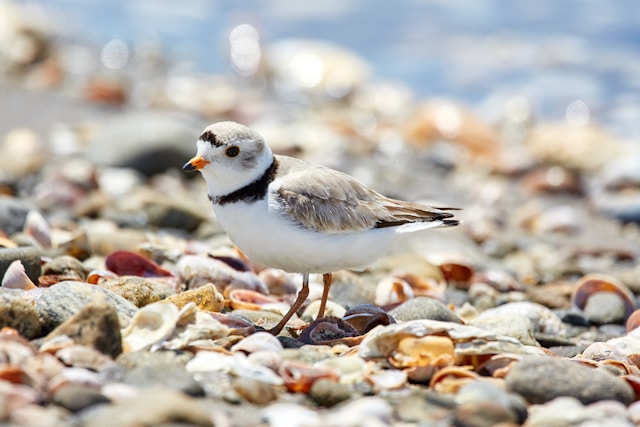
Shorebird Populations Drop Globally, Some by a Third
Editor’s note: “Birds and Offshore Wind: Developing the Offshore Wind that Birds Need”. – 2025 National Audubon Society
With up to a million birds currently being killed each year directly(which does not include indirect causes from mining and manufacturing) by wind turbines in the US, why would an organization dedicated to protecting birds say such a thing? Add on the fact that Wind facilities also require relatively large areas of land and sea. Facility development fragments and otherwise alters habitat in ways that make it unsuitable for species that have historically been present.
Report: “Conflicts of Interest” – Environmental Organizations(Audubon among them) Take Offshore Wind Industry Money
“These offshore projects, which could decimate hundreds of thousands of migratory birds, will be built by some of the largest international oil and gas companies in the world,” the group said. “Our findings take on suspended belief when one considers Ørsted’s involvement with the New Jersey Audubon Society.” The Danish company is the official sponsor of the New Jersey Audubon Society’s fundraiser, the World Series of Birding where funds are raised to support bird conservation.
By Kristine Sabillo / Mongabay
Sixteen shorebird species have been reclassified to higher threat categories as the global population of migratory shorebirds across the world saw a substantial decline, according to the latest update to the IUCN Red List of Threatened Species.
Conservation partnership BirdLife International, which helps examine the status of the world’s birds for the IUCN Red List, reassessed around half of the 254 species of shorebirds the organization currently monitors, for 2024, according to Ian Burfield, BirdLife International’s global science coordinator.
The reassessment was prompted by a study published last year that showed steep declines in many shorebird species in North America, Burfield told Mongabay via email.
“[B]ut as it only covered part of their global populations, we had to source equivalent data from elsewhere … to produce a global picture, before applying the IUCN Red List criteria to reassess their status,” Burfield said. “Most species did not need recategorizing, but of those that did, virtually all have deteriorated.”
After the latest reassessment, seven of the 16 shorebird species were categorized as “near threatened” and nine are now “vulnerable” to extinction as they experienced global population declines of 20-40% over three generations.
BirdLife International said in a statement that migratory birds are especially at risk as they follow specific migration flyways or routes and stop along the way to rest and feed at certain sites that now face threats like habitat loss and climate change impacts.
“While many of these shorebirds remain numerous and are still commonly encountered along their flyways, new analyses of data from long-term monitoring schemes reveal that the global populations of some species have declined by more than a third in recent decades,” Burfield said in the statement.
Among those that have now been moved into a higher “threatened” category of vulnerable are the gray plover (Pluvialis squatarola) and the curlew sandpiper (Calidris ferruginea), both of which breed in various parts of the Arctic and migrate globally during their nonbreeding seasons. They both face threats from habitat loss and degradation, hunting, and climate change impacts.
The Hudsonian godwit (Limosa haemastica), a large shorebird that breeds in northern Canada and Alaska and migrates to South America during its nonbreeding months, is also now considered vulnerable. The IUCN notes in its assessment of the species that the bird’s population is seeing a “significant decline … most severely noted in numbers recorded at migratory sites in North America.”
BirdLife International said in its statement that protecting shorebirds is also important for the coastal communities that depend on the same habitats as the birds.
‘The perilous declines of migratory birds are a sign that the integrity of flyways is deteriorating,” Burfield said. “Losing the network of habitats that migratory birds depend on to rest and feed during their long journeys could have severe consequences for the millions of people that rely on these sites, as well as the birds.’’
Kristine Sabillo is a wire reporter for Mongabay. She has been a multimedia journalist for more than a decade and has produced political, science and environment content for the online, print, television and radio newsrooms of leading media organizations in the Philippines. Feedback: Use this form to send a message to this author. If you want to post a public comment, you can do that at the bottom of the article page.
Photo by Mathew Schwartz on Unsplash
